





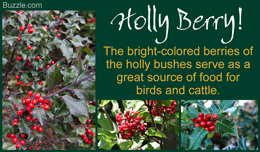 Holly bushes (botanical name - Ilex) are a genus containing more than 400 species. They are ornamental plants that have been used for decoration and as hedges since ages. Different types of holly bushes are used widely in flower gardens all across Europe and America. They are also found in parts of Asia and Africa. These bushes are dark evergreen plants with bright-colored berries which serve as a great source of food for birds and herbivores. They can grow up to considerable heights like 60 feet and above. They are naturally very hardy, which means they can endure extreme climates without withering. Blue Holly: Ilex Meserveae
Holly bushes (botanical name - Ilex) are a genus containing more than 400 species. They are ornamental plants that have been used for decoration and as hedges since ages. Different types of holly bushes are used widely in flower gardens all across Europe and America. They are also found in parts of Asia and Africa. These bushes are dark evergreen plants with bright-colored berries which serve as a great source of food for birds and herbivores. They can grow up to considerable heights like 60 feet and above. They are naturally very hardy, which means they can endure extreme climates without withering. Blue Holly: Ilex Meserveae This variety of holly gets its name from its creator, Mrs. F. Leighton Meserve from New York. Mrs. Meserve used two different types of hollies, Ilex Rogusa (which was strong but not very attractive) and Ilex Aquifolium (which was attractive but not very hardy) and created a hybrid in the early 1960s. This hybrid was both attractive and hardy. The first hybrids were called Blue Boy and Blue Girl (as hollies are males or females). Later, as more hybrids were created, they got different names like Blue Prince and Blue Princess, Blue Maid and Blue Stallion, Blue Angel, Honey Maid, Golden Girl, etc.
This variety of holly gets its name from its creator, Mrs. F. Leighton Meserve from New York. Mrs. Meserve used two different types of hollies, Ilex Rogusa (which was strong but not very attractive) and Ilex Aquifolium (which was attractive but not very hardy) and created a hybrid in the early 1960s. This hybrid was both attractive and hardy. The first hybrids were called Blue Boy and Blue Girl (as hollies are males or females). Later, as more hybrids were created, they got different names like Blue Prince and Blue Princess, Blue Maid and Blue Stallion, Blue Angel, Honey Maid, Golden Girl, etc.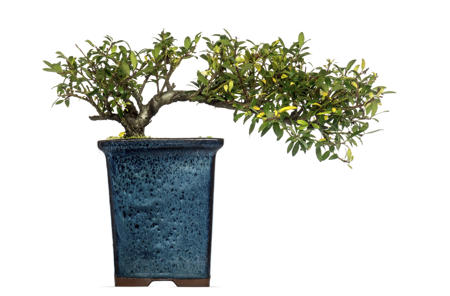 This type grows slowly, but can live longer than 75 years. The distinguishable feature of this holly is that, though its branching habit is dense, its leaves are textured delicately and are spiked. The berries are generally black, but on some Japanese Holly bushes, they are a shade of golden yellow.
This type grows slowly, but can live longer than 75 years. The distinguishable feature of this holly is that, though its branching habit is dense, its leaves are textured delicately and are spiked. The berries are generally black, but on some Japanese Holly bushes, they are a shade of golden yellow.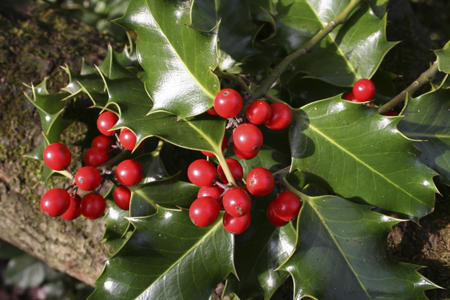 The American Holly, as the name suggests, is among the native American holly bushes. This type grows up to a height of 15 to 30 feet. The foliage is deep green and the leaves are small and pointed. They bear bright scarlet berries. Some other cultivars of the American Holly are Cobalt, Cardinal Hedge, Miss Helen, etc. The American Holly is widely used as an ornamental plant for landscape designs in gardens across America and Europe and also for festive decorations.Chinese Holly: Ilex Cornuta
The American Holly, as the name suggests, is among the native American holly bushes. This type grows up to a height of 15 to 30 feet. The foliage is deep green and the leaves are small and pointed. They bear bright scarlet berries. Some other cultivars of the American Holly are Cobalt, Cardinal Hedge, Miss Helen, etc. The American Holly is widely used as an ornamental plant for landscape designs in gardens across America and Europe and also for festive decorations.Chinese Holly: Ilex Cornuta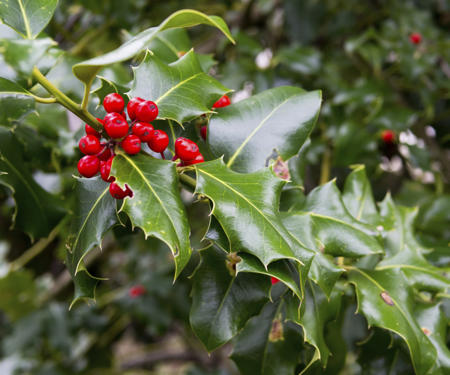 The Chinese Holly is a very densely foliated shrub that can grow up to a height of 25 feet. The leaves are deep, glossy green and the bush is rounded. The berries are initially tiny and light green, and they grow and progressively turn yellow and finally auburn. This variety is the first one that bears flowers and fruit in the spring and has the largest berries among all the holly varieties.
The Chinese Holly is a very densely foliated shrub that can grow up to a height of 25 feet. The leaves are deep, glossy green and the bush is rounded. The berries are initially tiny and light green, and they grow and progressively turn yellow and finally auburn. This variety is the first one that bears flowers and fruit in the spring and has the largest berries among all the holly varieties.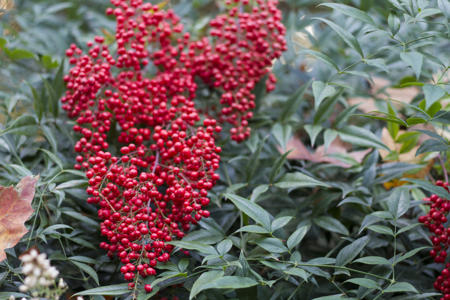 The Inkberry Holly is probably the hardiest of all the kinds of holly. It can withstand extreme cold, a fair amount of heat and grows well in wet and marshy swamp areas. The leaves, which are bright green in the beginning, turn dark and glistening green as they mature. As the plant grows older, it begins to droop towards the ground. The Inkberry Holly grows up to 8 to 10 feet. The black berries that it bears are a good source of food for birds. Since this shrub does not have a very thick foliage, it can be used as a bordering decoration around ponds, bridges, buildings, etc. Some cultivars are Shamrock, Nordic, Nigra, etc.English Holly: Ilex Aquifolium
The Inkberry Holly is probably the hardiest of all the kinds of holly. It can withstand extreme cold, a fair amount of heat and grows well in wet and marshy swamp areas. The leaves, which are bright green in the beginning, turn dark and glistening green as they mature. As the plant grows older, it begins to droop towards the ground. The Inkberry Holly grows up to 8 to 10 feet. The black berries that it bears are a good source of food for birds. Since this shrub does not have a very thick foliage, it can be used as a bordering decoration around ponds, bridges, buildings, etc. Some cultivars are Shamrock, Nordic, Nigra, etc.English Holly: Ilex Aquifolium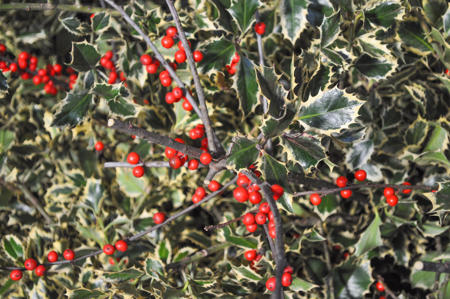 The English Holly is a native plant of Europe. It was brought to North America to be used as an ornamental plant. An average English Holly can grow up to 30 feet. The foliage is thick and the leaves are pointed and sharp around the edges. The leaves are a deep shade of green, waxy and have a shiny appearance. The flowers are sweet-smelling and the berries are deep red. The English Holly berries are poisonous if ingested by humans. Even birds and insects wait until the berries are fully ripe before they consume the berries as they are extremely bitter. Its cultivars include Rubricaulis Aurea, Peter's, etc.How to Plant a Holly BushIf good care is not taken during planting, holly bushes will not be able to serve their purpose and your garden might turn out to look hideous! Read on to know more about how you can plant them.
The English Holly is a native plant of Europe. It was brought to North America to be used as an ornamental plant. An average English Holly can grow up to 30 feet. The foliage is thick and the leaves are pointed and sharp around the edges. The leaves are a deep shade of green, waxy and have a shiny appearance. The flowers are sweet-smelling and the berries are deep red. The English Holly berries are poisonous if ingested by humans. Even birds and insects wait until the berries are fully ripe before they consume the berries as they are extremely bitter. Its cultivars include Rubricaulis Aurea, Peter's, etc.How to Plant a Holly BushIf good care is not taken during planting, holly bushes will not be able to serve their purpose and your garden might turn out to look hideous! Read on to know more about how you can plant them.
Copyright © www.100flowers.win Botanic Garden All Rights Reserved